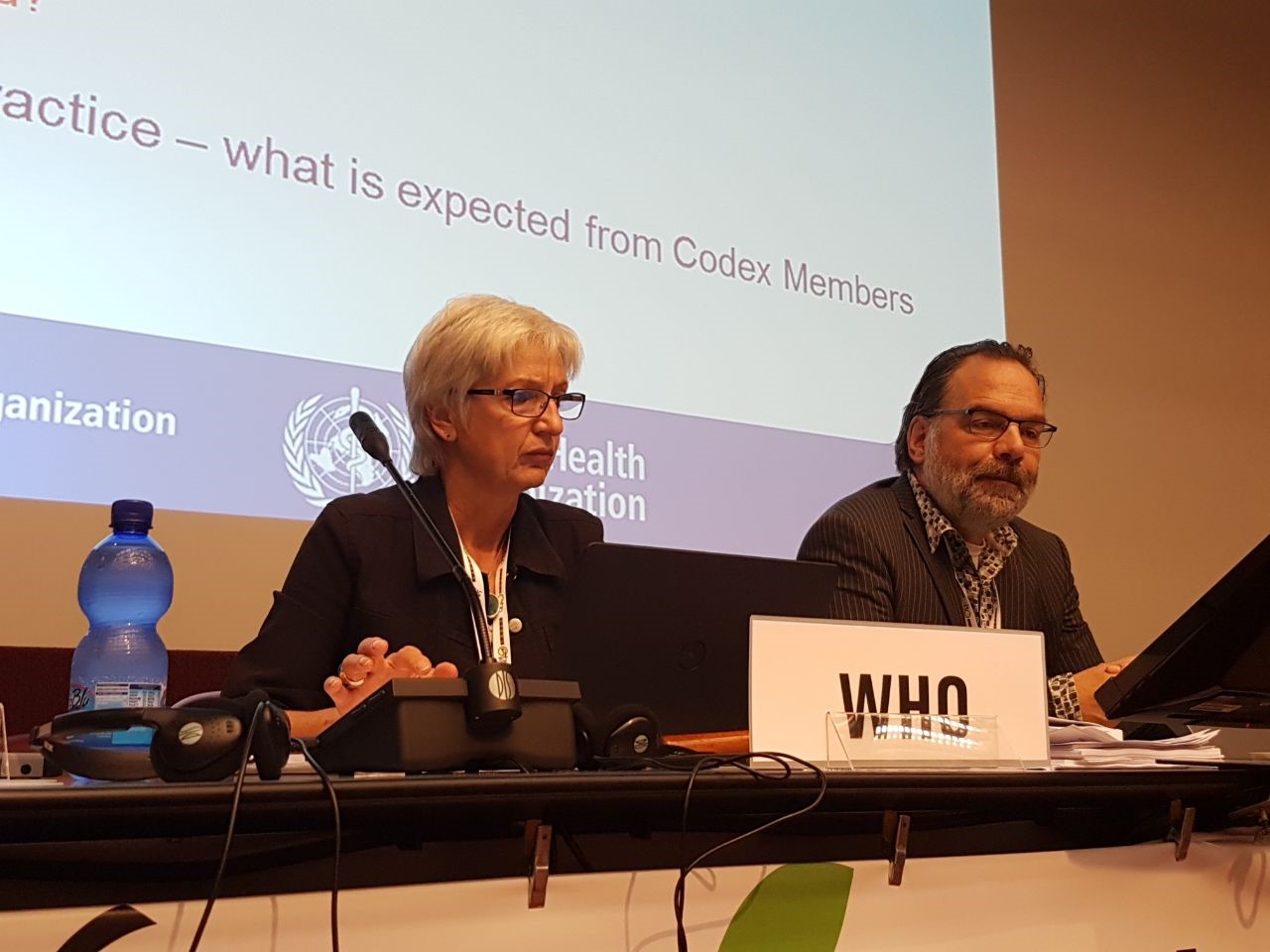Title
The science that leads to Codex food safety standards
Description
Two officers illustrated for the Codex Alimentarius Commission, during its 40th session, the way FAO and WHO work together to provide the scientific advice on which Codex food safety standards are based. Markus Lipp, Senior Food Safety and Quality Officer, FAO, and Angelika Tritscher, Coordinator Risk Assessment and Management, WHO, described the process that the various international risk assessment bodies, led by the two UN organizations, employ to deliver the scientific advice requested by Codex Committees as the basis for the preparation of standards. This process involves the publication of a call for data, seeking experts, conducting risk assessments and objectively arriving at conclusions.
Angelika Tritscher (WHO) and Markus Lipp (FAO) “Standards need to be based on science in order to have weight and evidence behind them, and to be implemented by governments and food chain operators”, said Lipp, emphasizing that the latest methodologies are always used as well as harmonized with those of other agencies. Support from Codex Members“The risk assessments are only as strong as the data available”, said Tritscher, who called on Codex Members to take an active role in identifying sources for scientific evidence and experts to be part of the groups tasked with conducting the assessments. “We need you to help increase not only financial resources to fund the Joint FAO/WHO Scientific Advice Programme but also to distribute calls for data and experts,” she said. The assessment bodies look at microbiological and chemical compounds in food. They determine how much of a contaminant, food additive, veterinary drug residue or pesticide residue is acceptable by taking into account both how much is found in the food (based on good production practices) and how much of the food is consumed. Technical CommitteesRequests for scientific advice come from Codex technical committees before drafting specific standards. These requests are addressed by the respective international risk assessment bodies:
When the compound or request in question does not fall under the competence of any of these committees or rapid advice is necessary, such as for the melamine event in 2008 or after the Fukushima Daiichi nuclear disaster in 2011, ad hoc expert meetings are held. Publicly availableWhen the assessment bodies have concluded their meetings, their decisions are publicly available at no cost on the FAO and WHO websites in the form of detailed monographs or concise reports. Brief summaries of the main conclusions are often issued shortly after the meetings, to rapidly disseminate the key outcomes. And at WHO
News date
21/07/2017
|

Page tools


